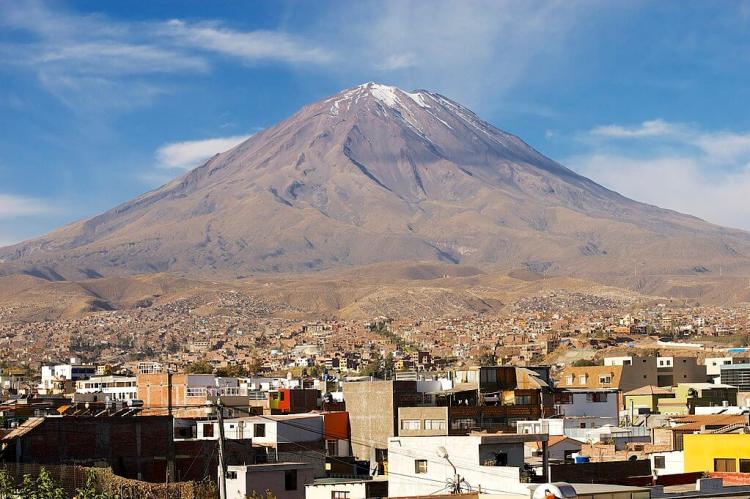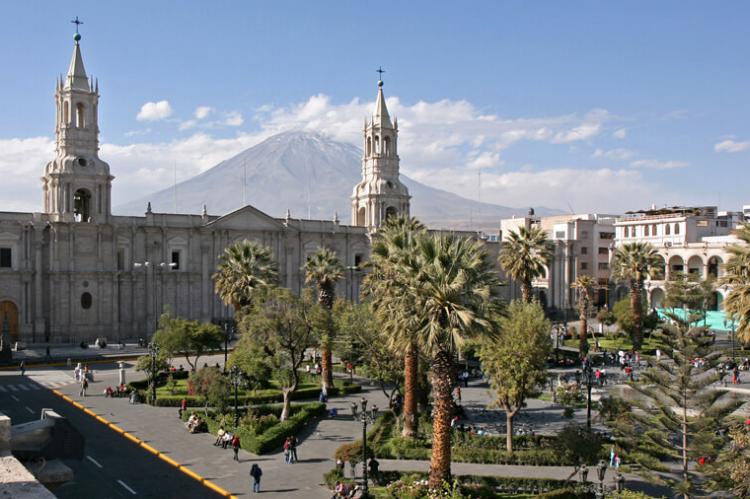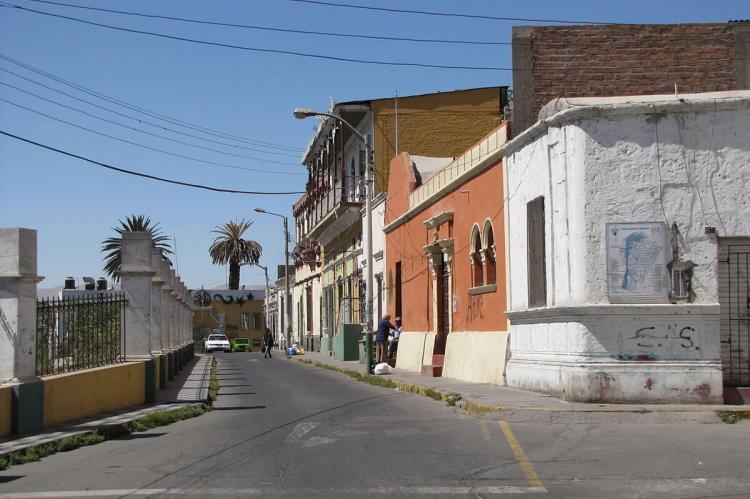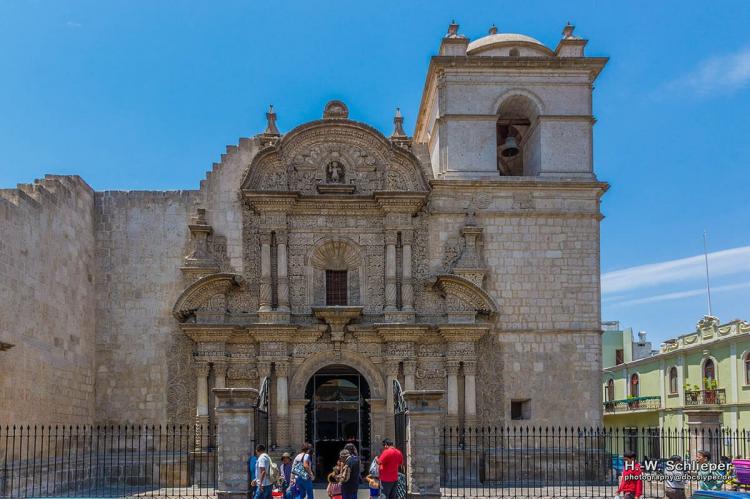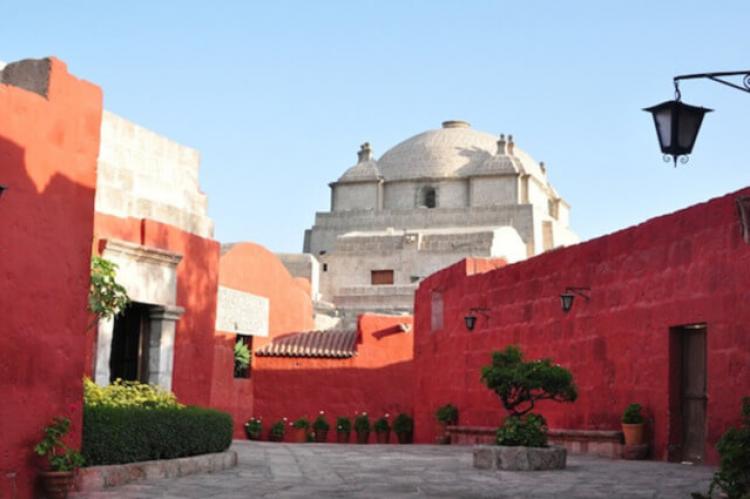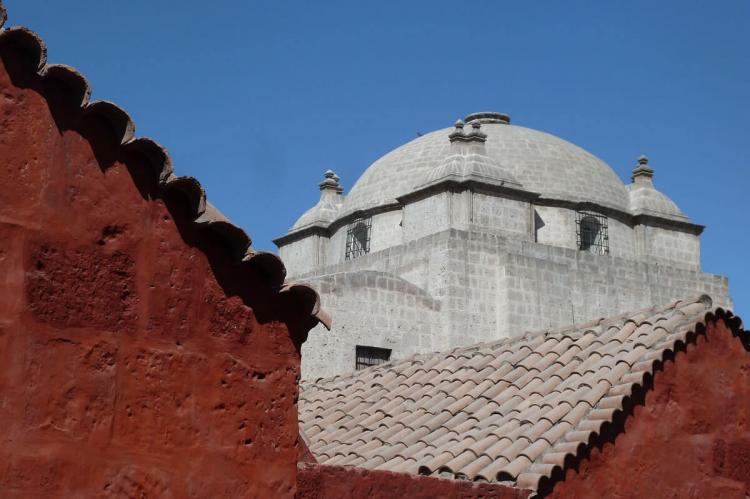Arequipa: Unveiling the Legacy of Peru's White City
Arequipa, Peru, is called "The White City" because of its extensive use of volcanic stone in construction. The city is a fascinating blend of European and indigenous influences, and its Historical Center is the core of its appeal, showcasing centuries of architectural brilliance and cultural traditions.
Arequipa: Unveiling the Legacy of Peru's White City
Nestled in the embrace of the Andes in southern Peru, Arequipa is a vibrant testament to the nation's multifaceted history and cultural richness. Renowned as "The White City" for its predominant use of volcanic stone, specifically sillar, in construction, Arequipa's charm extends beyond its stunning landscapes. The city is a harmonious blend of European and indigenous influences, evident in its colonial architecture, local culture, and deep historical roots.
At the core of Arequipa's allure is its UNESCO-designated Historical Center. This area, a microcosm of the city's diverse heritage, encapsulates centuries of architectural brilliance, cultural traditions, and historical significance. The fusion of styles and influences within the Historical Center reflects the unique character that sets Arequipa apart.
Beyond its architectural marvels, Arequipa holds the title of the "legal capital of Peru" due to the presence of the Constitutional Court. As the country's second most populous city, pulsating with an urban population of around 1,000,000, the city is a dynamic hub of life. Its streets, steeped in history, offer a captivating journey through time while embracing a thriving modern scene.
Geographical Overview
Arequipa, situated at an impressive altitude of 2,335 meters (7,660 feet) above sea level, is the capital of its namesake region in southern Peru. The city's location is a stunning combination of natural beauty and strategic importance. Three towering volcanoes - Misti, Chachani, and Pichu Pichu - form a protective barrier around the city, adding to Arequipa's nickname, "The White City." The fertile valley nurtured by the Chili River creates a vibrant contrast to the majestic mountains while contributing to the city's agricultural prosperity.
The city's strategic position between the Andes Mountains and the coastal plains has played a significant role in its history. This natural gateway has facilitated trade and communication between the diverse regions of southern Peru for centuries, cementing the city's status as a cultural and economic hub. The skyline, dominated by the iconic volcanic cones, serves as a constant reminder of the awe-inspiring natural beauty surrounding Arequipa. This unique blend of dramatic landscape and historical significance has earned the city a well-deserved reputation as an enchanting tourist destination, attracting visitors from all over the world.
History
Arequipa boasts a rich history that spans over thousands of years. The region's fertile valleys were inhabited by diverse indigenous cultures, such as the Collagua and Wari, with evidence of settlements dating back to around 8000 BC. However, the arrival of the Incas in the 15th century marked a significant turning point in Arequipa's history. They made it a strategic administration center and showcased their agricultural prowess through impressive irrigation systems and terraces. These legacies still exist and can be seen in the city's landscape.
In 1540, Spanish conquistadors led by Francisco Pizarro arrived, marking the beginning of the colonial period. Arequipa was named "Villa Hermosa de Arequipa," and construction began on the city's iconic buildings made with the unique white sillar stone. As a thriving commercial and cultural center, Arequipa attracted artists, merchants, and missionaries, creating a lively community. During this time, magnificent architectural wonders like the Santa Catalina Monastery and the enchanting Plaza de Armas were constructed, making Arequipa the center of social and political life.
During Peru's fight for independence from Spain, Arequipa became a stronghold of revolutionary passion. The city played a significant role in the development of radical ideas and witnessed crucial battles, earning its nickname "The Rebellious City" for its unwavering determination for independence. Even after gaining independence in 1821, Arequipa continued to assert its political and economic influence, consolidating its position as a dominant force in the Peruvian landscape.
During the 19th and 20th centuries, Arequipa underwent significant changes, transforming it into a bustling modern metropolis. The construction of railroads and improved infrastructure brought about technological advancements that propelled the city into the forefront of progress. Despite these changes, Arequipa's cultural scene flourished, becoming a nurturing ground for a vibrant community of artists and writers. Among these artists and writers, luminaries such as Mario Vargas Llosa emerged to leave an indelible mark on the city's legacy.
Historical Center
The Historical Center of Arequipa is a testament to the city's rich history and architectural splendor, recognized by its designation as a UNESCO World Heritage Site. This enclave, spanning an impressive 332 hectares (820 acres), comprises 49 original Spanish layout blocks, 24 colonial-era blocks, and 19th-century additions, seamlessly blending native craftsmanship with European designs.
Arequipa's architectural resilience against earthquakes is palpable, evident in the sturdy construction of its buildings, characterized by robust walls, archways, porticos, vaults, courtyards, and open spaces. The facades, adorned with intricate Baroque decorations, reflect a profound indigenous influence, echoing the city's diverse cultural tapestry shaped by preexistent indigenous populations, Spanish conquest, and evangelization, all against the backdrop of the region's striking natural landscape and the persistent threat of seismic activity.
The architectural evolution of Arequipa unfolds across five distinct periods, tracing its journey from a humble village foundation in the 16th century to the grandeur of the Baroque era, the introduction of Rococo and neoclassical styles, the modern empiricism of the 19th century, and finally, contemporary design trends that continue to shape the city's skyline.
At the heart of the historic town lies the Plaza de Armas (Plaza Mayor), an iconic gathering place featuring elegant archways, the imposing municipality, and the majestic cathedral. Among Arequipa's religious monuments are the church and cloisters of La Compañia, exemplifying the pinnacle of Baroque mestizo architecture in the late 18th century.
However, Arequipa's architectural charm extends far beyond its religious edifices. The city boasts approximately 500 dignified casonas (large houses) and well-proportioned vernacular houses, each bearing witness to its rich history and cultural heritage. These buildings, characterized by large doorways and hallways that allow urban space to flow seamlessly between facades and courtyards, create a sense of spatial continuity that is both captivating and immersive.
Furthermore, Arequipa's ornamental economy is evident in its meticulously crafted porches, vaults, cornices, and corbels, which beautifully complement the narrow window openings and illuminate semi-circular arches or vaulted roof spaces. Together with its monumental ensembles, picturesque streets, and charming squares, these buildings contribute to the harmony and integrity of Arequipa's townscape, providing an exceptional urban experience that embodies the city's unique character, respect for tradition, and cultural vibrancy.
Conclusion
Arequipa's Historical Center is a remarkable testament to the city's rich history and exceptional architectural designs, and it has been designated as a UNESCO World Heritage Site. The center seamlessly blends native craftsmanship with European styles, reflecting Arequipa's diverse cultural tapestry and its resilience against earthquakes. It encapsulates the city's evolution across centuries, from its humble village origins to its grand Baroque splendor and modern design trends. With landmarks like the Plaza de Armas and the church of La Compañia, ornate houses, and charming streets, the Historical Center is a living embodiment of Arequipa's heritage, tradition, and cultural vibrancy.
